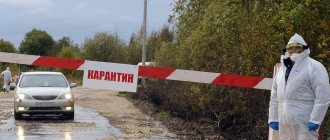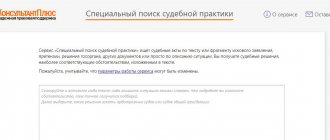Disciplinary liability for violation of labor protection legislation
While the employee signs his employment relationship with the head of the organization, he also assumes responsibilities in terms of labor protection. Such responsibilities are enshrined in Articles 214 of the Labor Code of the Russian Federation.
As soon as an employee violates his obligations. Disciplinary liability arises for violation of labor protection legislation . Therefore, the manager in this case has the right to apply one of the disciplinary sanctions: a reprimand, or deprivation of a bonus.
In particular, an employee can be dismissed if his violation of labor protection requirements entails serious consequences (accident or accident). Or, moreover, created a real threat of such consequences.
Article 214 of the Labor Code of the Russian Federation. Responsibilities of an employee in the field of labor protection (current version)
1. Among the main duties of the Labor Code assigned to the employee are the obligations to comply with labor protection and labor safety requirements, to immediately inform the employer or immediate supervisor about the occurrence of a situation that poses a threat to the life and health of people (Article 21).
The commented article provides for a wider range of employee responsibilities in the field of labor protection.
Since the concept of “employee” covers not only persons in blue-collar professions, but also managers, specialists and other employees, the responsibilities listed in the commented article apply to all categories of workers and are assigned both to workers performing organizational and administrative functions, and to workers engaged in production activities. The scope of responsibilities of the corresponding category of employees to comply with labor protection requirements is established depending on their legal status. Thus, employees performing organizational and administrative functions are required to comply with state regulatory requirements contained in federal laws and laws of the constituent entities of the Russian Federation, intersectoral and sectoral rules on labor protection, intersectoral standard and sectoral standard instructions on labor protection, safety rules, technical regulations, sanitary norms and rules. These rules contain the requirements for production premises and production sites (for processes performed outside production premises); requirements regulating permissible levels of hazardous and harmful production factors in production premises, on sites - for processes carried out outside production premises and in workplaces, as well as requirements for lighting, temperature, humidity and other production factors.
Labor protection rules also include requirements for the organization of work and other operations that affect the safety of workers; requirements for production equipment and its placement; requirements for raw materials, blanks, semi-finished products, methods of their storage and transportation; safety requirements for the organization of production (technological) processes (including fire and explosion safety requirements), for control and management systems of technological processes that ensure the protection of workers, for measures to protect workers from the effects of hazardous and harmful production factors arising in emergency situations, etc. In addition, persons performing organizational and administrative functions are charged with monitoring compliance with labor safety instructions by employees subordinate to them. The specific responsibilities of persons performing organizational and administrative functions in the field of labor protection are defined in job descriptions.
Workers engaged in production activities are required to comply with labor protection instructions developed based on their professions or types of work performed on the basis of inter-industry or industry standard labor protection instructions.
These instructions on labor protection for workers contain:
— safety requirements before starting work (the procedure for preparing the workplace, personal protective equipment; the procedure for checking the serviceability of equipment, devices and tools, fences, alarms, blocking and other devices, protective grounding, ventilation, local lighting, etc.; the procedure for checking the initial materials (blanks, semi-finished products); the procedure for receiving and transferring shifts in the case of a continuous technological process and equipment operation, etc.);
— safety requirements during work (methods and techniques for the safe performance of work, the use of technological equipment, vehicles, lifting mechanisms, devices and tools; requirements for the safe handling of starting materials (raw materials, workpieces, semi-finished products); instructions for the safe maintenance of the workplace; actions aimed at preventing emergency situations; requirements for the use of personal protective equipment for workers, etc.);
— safety requirements upon completion of work (procedure for shutting down, stopping, disassembling, cleaning and lubrication of equipment, fixtures, machines, mechanisms and equipment; procedure for removing waste generated during production activities; requirements for maintaining personal hygiene; procedure for notifying the work manager about deficiencies affecting on labor safety discovered during work, etc.);
— safety requirements in emergency situations (stop work, turn off power from faulty equipment (equipment, stand), if necessary, fence off the dangerous place and immediately report the incident to the work manager and then follow his instructions to prevent accidents or eliminate the emergency situation that has arisen , act in accordance with the approved emergency response plan, etc.). If a fire occurs, you must: immediately notify the fire department, indicating the exact location of the fire; inform the work manager; notify others and, if necessary, remove people from the danger zone; begin to extinguish the fire using primary fire extinguishing agents; organize a meeting of the fire brigade.
Managers, specialists and other employees performing their work functions under conditions of exposure to harmful or dangerous factors or in cases where their work requires the use of methods and techniques for the safe performance of work, appropriate handling of machines, mechanisms, equipment, must also comply with safety requirements, established by labor protection instructions.
2. Along with managers and other employees, employees directly involved in production activities should also contribute to the creation of safe working conditions. Consolidation in the commented article of the duties of workers to correctly use personal and collective protective equipment, undergo training in safe methods and techniques for performing work and providing first aid to victims at work, undergo mandatory medical examinations, immediately notify their immediate or superior manager about any situation that threatens life and health people, etc. is not only aimed at reducing the risk of situations that threaten the life and health of people, but also allows the employer to take timely measures to prevent them.
3. Certain categories of workers are assigned by law additional responsibilities in the field of labor protection. So, for example, in accordance with paragraph 2 of Art. 9 of the Law on Industrial Safety of Hazardous Production Facilities, employees of a hazardous production facility are required to suspend work in the prescribed manner in the event of an accident or incident at a hazardous production facility, and to participate in the work to localize the accident at a hazardous production facility.
Federal Law dated 03/08/2011 N 35-FZ “Charter on discipline of employees of organizations operating particularly radiation-hazardous and nuclear-hazardous production and facilities in the field of nuclear energy use” establishes the following responsibilities of employees of operating organizations: to be constantly prepared to prevent and eliminate emergency situations, preventing the development of an accident or eliminating its consequences, acting in the event of an emergency in accordance with the requirements of emergency instructions and in accordance with the emergency response plan; arrive immediately at work when called by the employer or a person authorized by him to prevent the development of an accident or eliminate its consequences; do not leave your workplace without permission; promptly inform your immediate supervisor or superior manager in the order of subordination about the reasons and conditions under which it is prohibited to continue work in the field of atomic energy use (presence of breastfed children, determination of disability, presence of medical contraindications), etc. (Article 2).
4. For non-fulfillment or improper fulfillment of the duties enshrined in the commented article, employees may be subject to disciplinary liability (see commentary to Article 419).
Comment source:
Rep. ed. Yu.P. Orlovsky “COMMENTARY ON THE LABOR CODE OF THE RUSSIAN FEDERATION”, 6th edition ACTUALIZATION
ORLOVSKY Y.P., CHIKANOVA L.A., NURTDINOVA A.F., KORSHUNOVA T.YU., SEREGINA L.V., GAVRILINA A.K., BOCHARNIKOVA M.A., VINOGRADOVA Z.D., 2014
Administrative liability for violation of labor protection legislation
Administrative responsibility concerns not only the organization’s employees (officials), but also the organization itself (legal entities). Violations of regulatory labor safety requirements are punishable by fines specified in Article 5.27.1. Code of Administrative Offenses of the Russian Federation (presented in the table below).
Labor protection fines in 2021
| Types of violation | Amount of fine | |
| for officials | for legal entities | |
| Violation of state regulatory requirements for labor protection | from 2,000 to 5,000 rubles. | from 50,000 to 80,000 rub. |
| Violation of the procedure for conducting a special assessment of working conditions or its implementation | from 5,000 to 10,000 rubles. | from 60,000 to 80,000 rub. |
| Admission of an employee to perform job duties without undergoing mandatory medical examinations and training and testing knowledge of labor protection requirements | from 15,000 to 25,000 rub. | from 110,000 to 130,000 rub. |
| Failure to provide workers working in harmful (hazardous) working conditions with personal protective equipment | from 20,000 to 30,000 rub. | from 130,000 to 150,000 rub. |
| The listed violations were committed by a person who had previously been subject to administrative punishment for a similar violation | from 30,000 rub. 40,000 rub. or disqualification from 1 to 3 years | from 100,000 rub. 200,000 rub. or suspension of activities for 90 days |
It is much easier (and cheaper) to comply with labor protection requirements than to try to avoid punishment.
Criminal liability for violations of labor protection requirements
In addition, in certain cases it comes to criminal liability, regulated by Article 143 of the Criminal Code of the Russian Federation. Moreover, for violation of labor protection rules, if this entailed through negligence the infliction of grave or moderate harm to human health, criminal liability is provided for violation of labor protection legislation in the form of a fine in the amount of 200 to 500 minimum wages or wages for a period of 3 to 5 months, or correctional labor or even imprisonment for up to 2 years.
Increase in fines in 2021
All penalties have become much larger. In the past, their maximum amount per manager was 5,000 rubles. From this year it reaches 35,000 rubles. If we are talking about a legal entity, the fine can range from 50,000 to 200,000 thousand rubles.
Fines for violation of labor protection have increased the most . The maximum fine is 80,000 rubles. In rare, exceptional situations, the amount may increase to 130,000 rubles.
For example, if employees were sent to fulfill their immediate obligations without a proper medical commission (or if they are not aware of the safety regulations).
The proposed legislative norm is formulated as follows: any violation has its own separate composition regarding a specific employee.
If previously an organization with a large number of employees who had not been trained in the basics of labor protection was forced to pay 50,000 rubles, this year the amount of penalties is set for each specialist individually.
Legislative provisions also provide for notification - a new administrative penalty. At first it may seem that it is more profitable - you do not need to pay a fine. But in such a situation, all identified violations will be written about in the media.
If legislative provisions are violated repeatedly (for example, when concluding a civil process agreement rather than an employment agreement), the official may be disqualified. Time period – from one to three years. Here it is possible to exclude fines for violation of labor protection requirements - the penalty will be more significant.
Increasing the statute of limitations
An important addition is that the statute of limitations for bringing administrative liability has become longer. Now it is not two months, but one year. For example, if an organization violated something, then before the scheduled inspection they had the opportunity to resolve this issue without bringing management to responsibility (if the violation was detected again more than 60 days before the inspection). Managers must verify compliance with all legal requirements on labor protection. If violations are detected, their elimination must be immediate.






